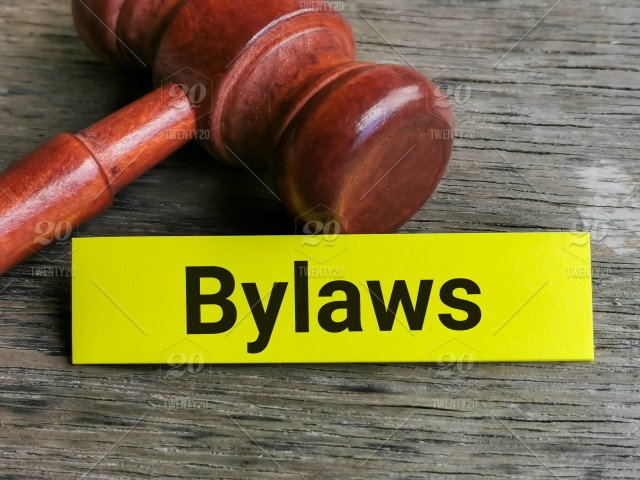Regulations and bylaws are written regulations for the operation of an association, company, or other kind of organisation.

Table of Contents
Bylaws
Bylaws often give instructions for ordinary organisational action, such as elections for officers and the board of directors, officer kinds and tasks, meetings, and so on. To be effective among members, bylaws must be legally approved or updated. Bylaws are sometimes mistaken with Articles of Corporation, which establish the fundamental structure of the firm.
A “bylaw” may also refer to laws enacted by a local government entity, such as a city or town. Local governments owe their ability to create such regulations to a law, such as a statute, and have no legislative authority beyond what is granted to them by local laws. These regulations are just as enforceable as laws enacted via legislation.
A bylaw differs from a corporate resolution. Once approved, a bylaw applies to all current and future situations, while a resolution relates to a particular corporate act.
What Is the Difference Between a Declaration and Bylaws and Rules and Regulations?
A Declaration may be considered of as the master of corporate documents: it outlines the prerequisites for affiliation and maintenance, identifies common features, and provides additional specifics.
The bylaws, on the other hand, establish the corporation’s regulations and how it will be administered, and include clauses dealing to, among other things:
Who is eligible to serve on the board?
What the board’s responsibilities are.
What the board’s authority is.
How members are chosen.
If any document contradicts the Declaration, the Declaration takes precedence. To alter the Declaration, a formal modification must be proposed and voted on by members. The Declaration specifies the proportion of votes necessary to enact such an amendment. Once enacted, amendments must be disseminated to members and registered with the County Recorder.
Rules and regulations, on the other hand, are not documented and hence more simpler to change. The board has the right to enact acceptable rules and regulations that are consistent with other governance instruments, such as the bylaws and Declaration, but these rules must be presented to the owners in order to be effective.
Understanding the Distinction Between CC and Rs, Bylaws, and Rules and Regulations
Covenants, Conditions, and Restrictions (CC & Rs) are legally enforceable contracts that outline a homeowners association’s (HOA) and its members’ duties and rights. The CCR & R is more difficult to alter since it needs a vote by the membership and must be legally documented and submitted with the state.
CC & Rs often address legal concerns such as:
Maintenance responsibilities of the homeowners organisation and its individual members
Obligations under insurance
Property use restrictions.
Mechanisms for enforcing the norms of the organisation.
Procedures for settling disagreements.
In other words, the CC and Rs address the “what” of a homeowners association. The bylaws, on the other hand, address the “how”: the continuing governance of the HOA. As a result, the bylaws address issues such as:
The total number of members.
The number of meetings.
Meetings must have a quorum.
The members of the board’s tasks and obligations.
Bylaws are similarly difficult to change since, like CC & Rs, revisions to bylaws need a vote of members. Finally, rules and regulations often cover everything not expressly addressed by the CC & R or bylaws.
Such rules may need to be updated from time to time to reflect changes in the operating environment. For example, a homeowners association may have a regulation stating that no children under the age of 12 are permitted in the community pool on weekdays, but this rule may be altered seasonally or when additional families come to the neighbourhood.
What Is the Difference Between Bylaws and Standing Rules?
Standing rules, as opposed to bylaws, are resolutions or regulations that operate under an organization’s bylaws and deal only with administrative concerns.
Standing rules create particular guidelines for an organization’s daily operations, such as:
The frequency with which committees meet.
The committee meetings’ time and date.
Petty cash may be utilised in a variety of ways.
The primary distinctions between standing rules and bylaws are therefore those of impact and scope: bylaws are more general and refer to processes, while standing rules are more administrative and speak to particular.
Bylaws and standing rules are also hierarchical in that bylaws take precedence over standing regulations. Additionally, bylaws are written when an organization is originally founded. Standing rules, on the other hand, are often developed on an as-needed basis by an organization’s committees or other management subdivisions.
